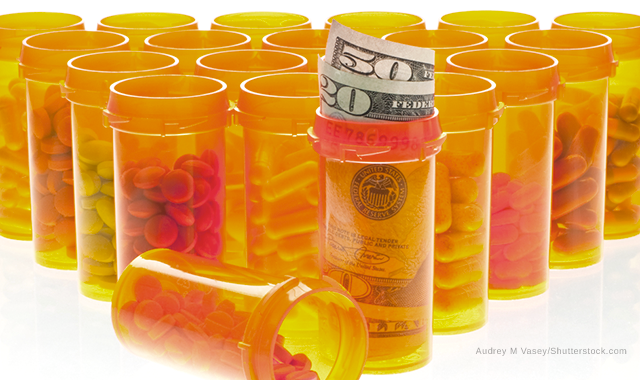Biosimilar Availability May Impact Drug Pricing
Study finds that biologics that faced competition from biosimilars showed reductions in net prices and leveling off of list price increases.

Biosimilars hold promise for reducing spending on biologics. Biosimilar prices are estimated to be 15% to 16% lower than originator products, but it is unclear how list prices, net prices, and discounts for the originator products change with biosimilar competition. This is the finding of researchers at the University of Pittsburgh, in their article, "Trends in List Prices, Net Prices, and Discounts for Originator Biologics Facing Biosimilar Competition," published December 13 in JAMA Network Open.
The researchers reported on their study of how biosimilars have affected prices for reference products. They selected filgrastim, pegfilgrastim, infliximab, and insulin glargine as case studies because they were the only originator biologics that, by December 2018, faced competition from biosimilars or from other within-molecule substitutes, according to the authors.
They used pricing data from January 2007 to June 2018 from SSR Health, which provides U.S. prescription brand drug pricing data and analytics. Net prices and discounts capture all manufacturer concessions and not solely rebates. For each drug and year, the researchers calculated the mean list and net prices and the mean discounts in Medicaid and other payers.
Analysis of pricing was done from August to October 2019. Results show:
• List and net prices for filgrastim (Neupogen) increased in parallel annually by 5.1% and 6.1%, respectively, before the introduction of its first biosimilar in 2015, when list prices stagnated and net prices decreased by a mean of 7.7% each year.
Related: 5 Myths About Biosimilars-And the Facts
• List and net prices for pegfilgrastim (Neulasta) increased by a mean of 7.5% and 4.9%, respectively, until the introduction of its first biosimilar in 2018, when list prices stagnated, and net prices dropped by 7.4%.
• List and net prices for infliximab, (Remicade) increased in parallel by a mean of 6.0% and 6.0%, respectively, from 2007 to 2013. In 2013, net prices started to decrease by a mean of 1.3% annually, then by 13.6% annually after the introduction of the first biosimilar in 2017.
• List and net prices for the insulin glargine (Lantus) increased annually from 2007 to 2014 by a mean of 14.7% and 8.8%, respectively. From 2015 to 2019, list price growth slowed to a mean of 5.8% annually. Net prices dropped by a mean of 14.4% in 2015, then dropped further to a mean of 23.5% after the entry of a substitute in 2017.
• Medicaid discounts rose by means of 20.1% for filgrastim, 31.2% for pegfilgrastim, 33.8% for infliximab, and 35.2% for insulin glargine across the study period.
The study was subject to several limitations, the authors report. First, estimates of Medicaid discounts reflect only statutory rebates; second, the analysis couldn’t determine whether net price decreases were associated with the entry of biosimilars or with other factors; third, there were differences in the market of each of the drugs included in the story; and finally, it’s not possible to establish whether larger discounts were because of increases in rebates or other manufacturer concessions.
“Nevertheless, our findings show that biologics that faced biosimilar competition-even without interchangeability-showed marked reductions in net prices and leveling off of list price increases,” the authors report.






